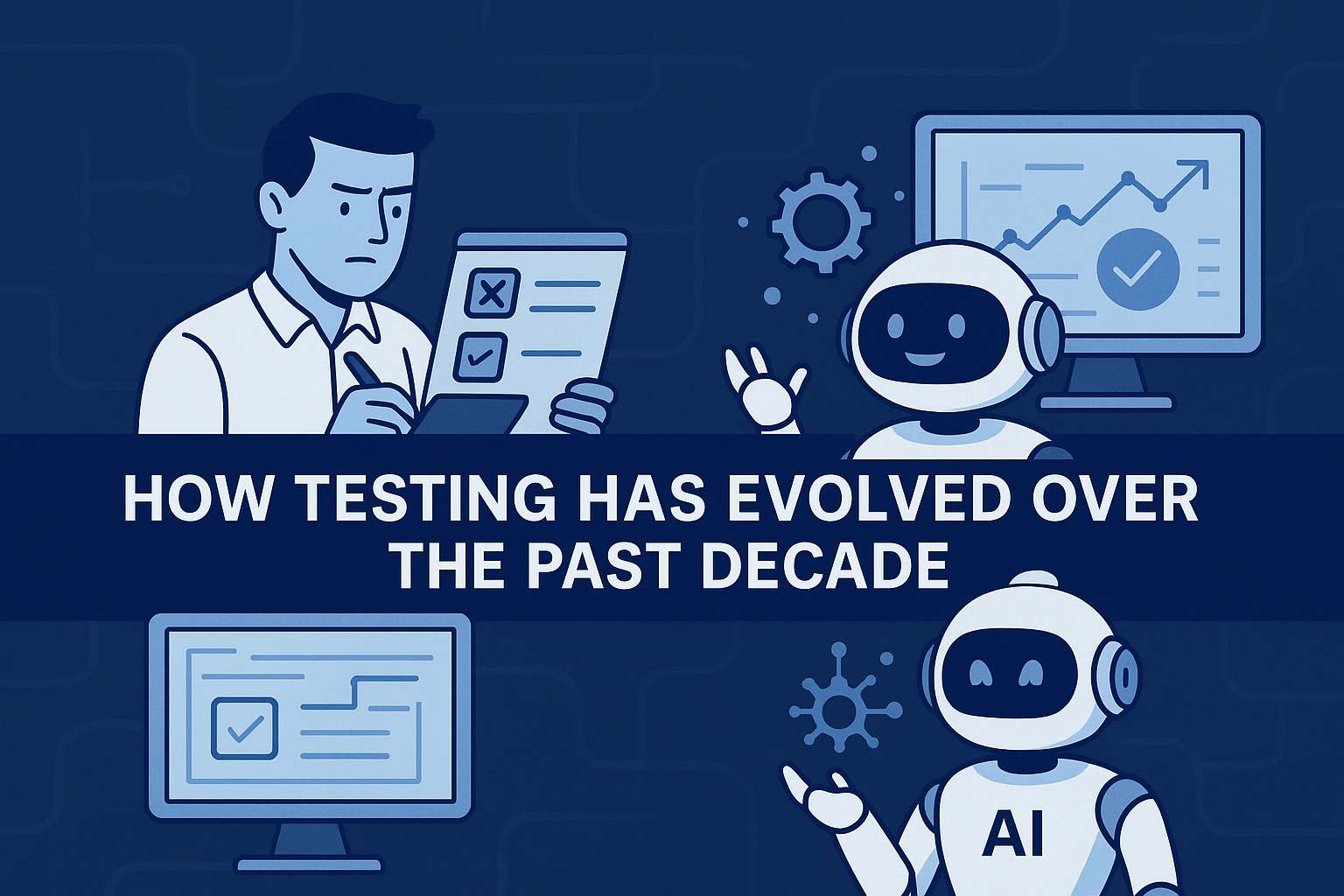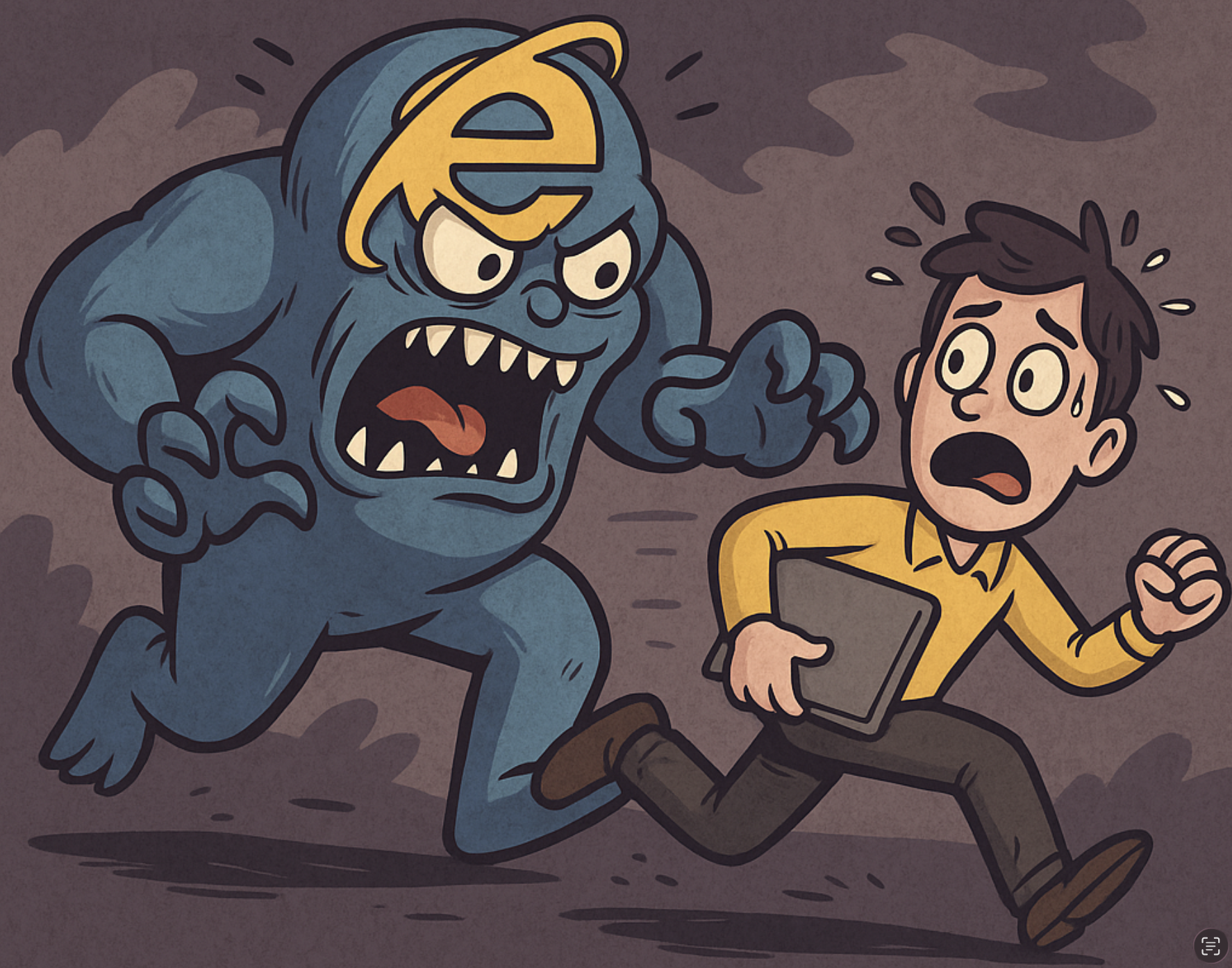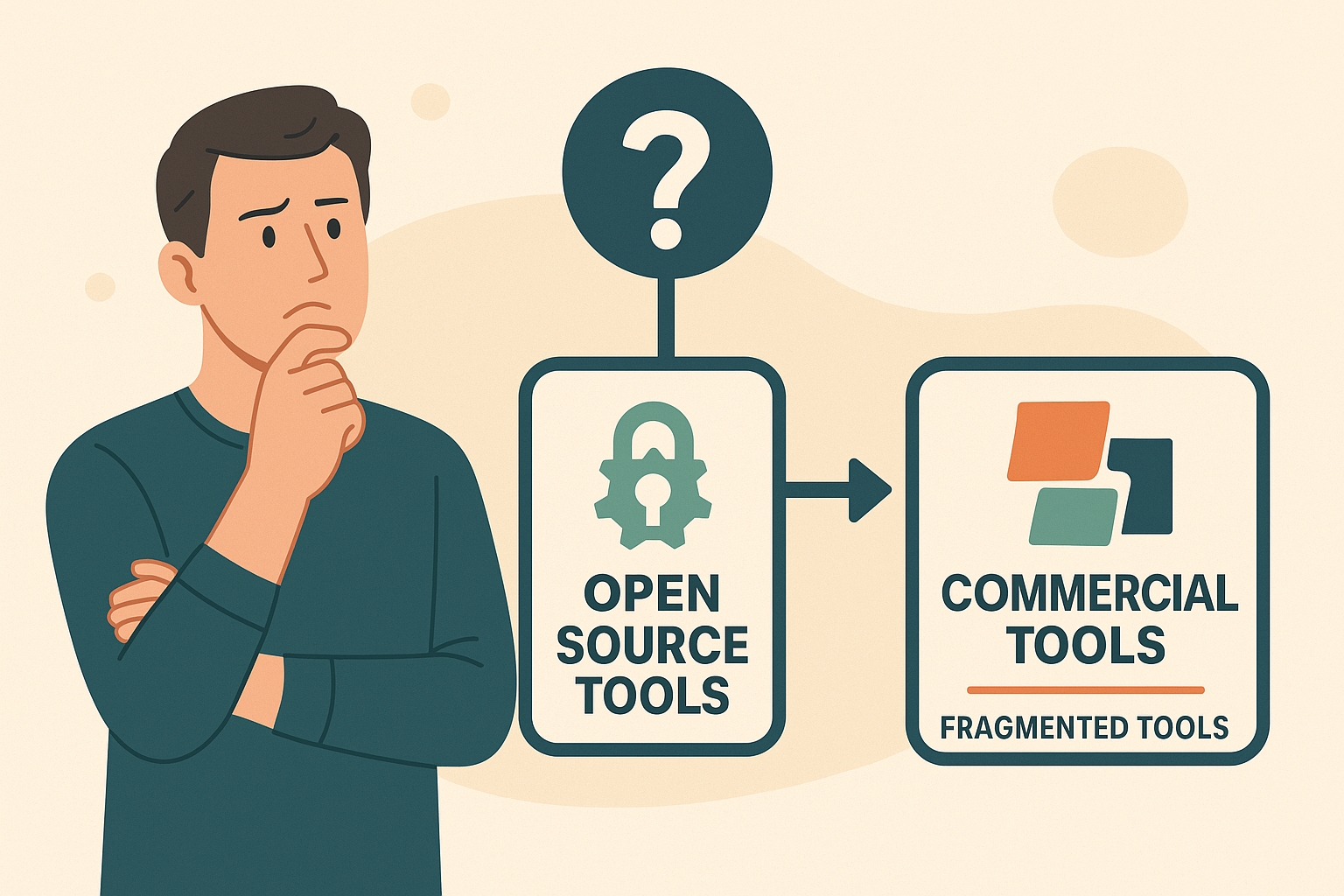From Manual Scripts to AI Agents - How Software Testing Has Evolved Over the Past Decade
When I started my journey as a Test Engineer more than a decade ago, testing looked very different from what it is today.
We were still at a stage where manual testing was the norm. Every test case was executed step-by-step, documented in spreadsheets, and tracked in shared folders. Automation was aspirational — something teams wanted to "eventually get to".
Then came Selenium.
It felt revolutionary — the ability to automate browser actions, execute across platforms, and integrate into CI pipelines. But it came with its own set of challenges that shaped how many of us think about testing even today.

The Early Days: Selenium Grids and the Browser Jungle
In my first few years, we used to maintain a Selenium Grid on virtual machines across different OS and browser versions. Each regression cycle meant spinning up test runs on Chrome, Firefox, Safari, and IE — and yes, each had its quirks. Testing on IE (Internet Explorer) - manually or through automation was a nightmare of inconsistent behavior and random failures. (I can laugh about it now, but back then it was pure frustration!)

One of the hardest challenges was browser compatibility validation. You could pass all tests on Chrome and still fail spectacularly on IE 11 due to subtle rendering or layout differences.
As part of a hackathon, I built something called the Browser Compatibility Tool — it performed image-based comparison of UI components across browsers and resolutions and versions. I used a baseline image and compared snapshots to identify discrepancies.
It wasn’t perfect — every design change required a baseline refresh — but it saved nearly 50% of the QA effort on UX validation. That project was my first taste of framework-building, and it taught me an important lesson:
Testing isn’t just about validation; it’s about building systems that learn and evolve.
The Streaming Era: From One-Month Releases to One-Day Turnarounds
Later, I joined a startup in the video streaming space. Testing here was a different beast altogether.
We had to validate live video rendering across 4K and multiple resolutions, check ad synchronization, ensure audio-video and closed captions stayed in sync across multiple languages, and test playback under varying network bandwidths.
Manual validation for a single release took almost a month. And when live streaming was added to the mix, bug resolution cycles turned into nightmares.
My team built an automated validation framework for these scenarios — integrating playback validation, bandwidth throttling, ad sync, and multi-language checks. The result?
Regression testing time dropped from one month to one day.
Why not one hour? Because we still had to manually verify reports from flaky tests and couldn’t easily cluster failures by root cause. But this experience triggered a deeper curiosity —
Could we analyze patterns in failures to auto-identify their causes?
The Next Challenge: Scale, Flakiness, and the Data Deluge
At another startup, I was part of a team facing a new kind of problem — scale. Thousands of test cases generating tens of thousands of records in every run caused performance degradation and test instability.
We evaluated multiple popular commercial testing solutions available, but none could holistically address the issues across UI, API, and data layers. We ended up building custom open-source frameworks to regain control. (This was at the cost of our CEO being willing to spend on commercial tools!)

That phase reaffirmed something many quality engineers experience:
Every organization’s testing challenges are unique, but the root causes often rhyme — data, flakiness, and fragmented validation.
The Turning Point: From Frameworks to Platforms
Across these experiences, one pattern became clear — every company rebuilt the same foundations in slightly different ways. Browser grids, visual comparisons, API orchestration, mobile validations, flaky test analysis — everyone solved these problems locally, but no one unified them.
That’s what inspired us to create DevAssure — a platform built not from theory, but from experience.
Every feature we’ve built stems from real-world challenges we personally faced as engineers.
All three founders (Santhosh, Badri and me) come from deep, hands-on quality backgrounds. DevAssure is more than a product — it’s a philosophy:
Quality isn’t a phase; it’s an intelligence that should live "invisibly" throughout the software lifecycle.
So What’s Next? The Decade of AI-Driven Quality
As we enter the next era of software testing, the shift is clear: Testing is no longer a function that follows development — it’s becoming autonomous, agentic, and intelligent.
AI isn’t here to replace testers; it’s here to augment them — to help us focus on reasoning, user empathy, and risk assessment, while machines handle repetitive validation, flaky retries, and log analysis.
The future of testing isn’t about automation scripts.
It’s about autonomous quality orchestration — where systems understand the intent of a requirement, generate and execute tests, analyze results, and continuously learn from failures.
And WE are just getting started.
Closing thoughts
From the early Selenium days to Playwright to AI-driven test orchestration, testing has come a long way — but the heart of it remains the same: an obsession with quality and user trust.
For me, the journey from manually clicking through forms to building AI-powered test platforms has been more than a career — it’s been a mission.
And the best part?
The story of testing isn’t done yet. We’re just writing its next chapter.
As we look ahead, I’m excited to see how AI agents, intelligent frameworks, and autonomous quality systems will redefine what it means to deliver reliable software.
